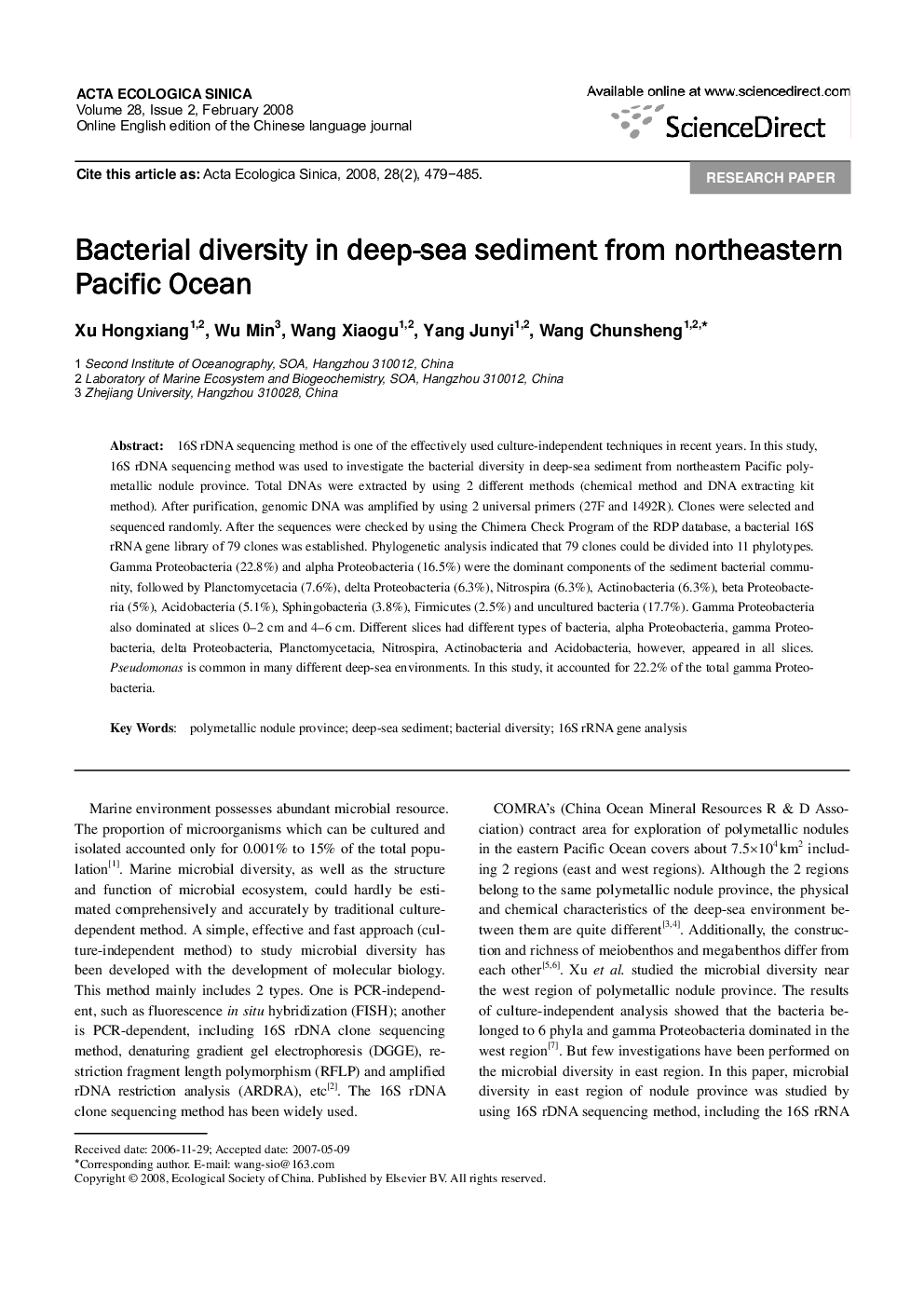| Article ID | Journal | Published Year | Pages | File Type |
|---|---|---|---|---|
| 4380280 | Acta Ecologica Sinica | 2008 | 7 Pages |
16S rDNA sequencing method is one of the effectively used culture-independent techniques in recent years. In this study, 16S rDNA sequencing method was used to investigate the bacterial diversity in deep-sea sediment from northeastern Pacific polymetallic nodule province. Total DNAs were extracted by using 2 different methods (chemical method and DNA extracting kit method). After purification, genomic DNA was amplified by using 2 universal primers (27F and 1492R). Clones were selected and sequenced randomly. After the sequences were checked by using the Chimera Check Program of the RDP database, a bacterial 16S rRNA gene library of 79 clones was established. Phylogenetic analysis indicated that 79 clones could be divided into 11 phylotypes. Gamma Proteobacteria (22.8%) and alpha Proteobacteria (16.5%) were the dominant components of the sediment bacterial community, followed by Planctomycetacia (7.6%), delta Proteobacteria (6.3%), Nitrospira (6.3%), Actinobacteria (6.3%), beta Proteobacteria (5%), Acidobacteria (5.1%), Sphingobacteria (3.8%), Firmicutes (2.5%) and uncultured bacteria (17.7%). Gamma Proteobacteria also dominated at slices 0–2 cm and 4–6 cm. Different slices had different types of bacteria, alpha Proteobacteria, gamma Proteobacteria, delta Proteobacteria, Planctomycetacia, Nitrospira, Actinobacteria and Acidobacteria, however, appeared in all slices. Pseudomonas is common in many different deep-sea environments. In this study, it accounted for 22.2% of the total gamma Proteobacteria.
